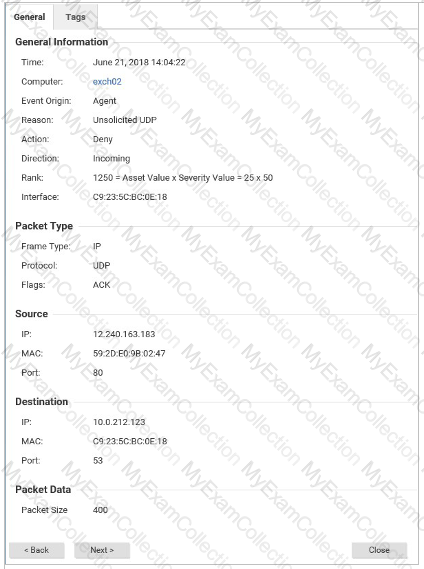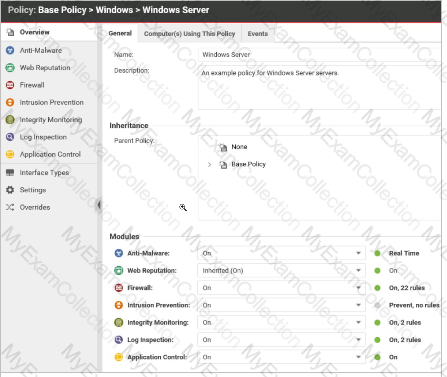The Security Level for Web Reputation in a policy is set to High. A server assigned this policy attempts to access a Web site with a credibility score of 78.
What is the result?
Which of the following are valid methods for pre-approving software updates to prevent Ap-plication Control Events from being triggered by the execution of the modified software? Select all that apply.
Multi-tenancy is enabled in Deep Security and new tenants are created. Where does the new tenant data get stored when using SQL Server as the Deep Security database?
The details for an event are displayed in the exhibit. Based on these details, which Protection Module generated the event?

Which of the following statements is true regarding the use of the Firewall Protection Module in Deep Security?
In the policy displayed in the exhibit, the state of the Web Reputation Protection Module is set to "Inherited (On)", while the state for the other Protection Module is set to "On". Why is the Web Reputation Protection Module displayed differently than the other Protection Modules.


